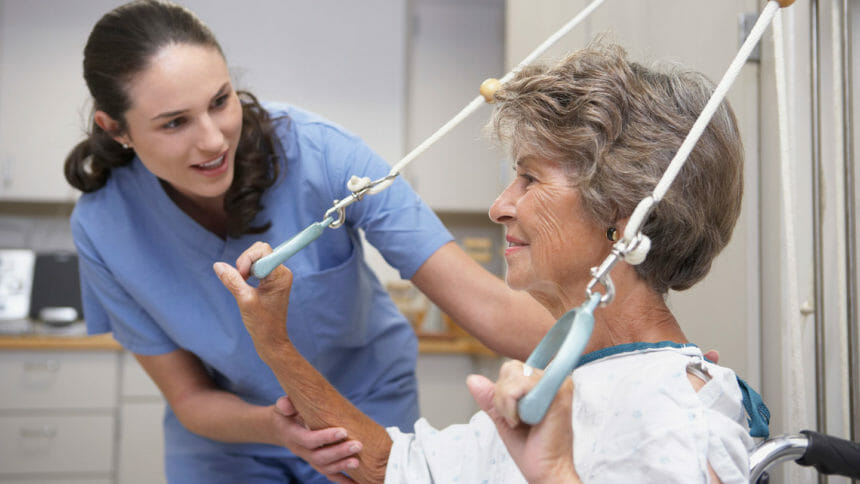
Nursing-home eligible older adults who participate in a high-intensity rehabilitation program experience long-lasting functional improvements shown to reduce the risk of falls and help maintain independence, according to the results of a new pilot study.
Investigators introduced a six-week program to 28 community dwelling seniors at a Denver Program of All-Inclusive Care for the Elderly. The program, called “Screening and high-intensity interventions to Improve Falls risk and Transform expectations in age and aging” (SHIFT) is a rehabilitation approach based on high-intensity resistance training principles. It was incorporated into the normal rehab schedule for medically complex older PACE participants at high risk for falls and admission to nursing facilities.
Participants underwent regular tests of physical function and gait speed during the program and at six and 12 months after discharge.
The SHIFT program significantly improved function for those who completed the protocol, with changes sustained for a full 12 months, according to Jennifer Stevens-Lapsley, MPT, Ph.D., of the University of Colorado, and colleagues. There were no treatment-specific adverse events reported.
“Functional gains achieved were above thresholds necessary for independence and fall risk reduction,” the authors wrote.
Overcoming challenges
Therapists and participants overcame a variety of challenges, including the presence of multiple chronic conditions, high prevalence of cognitive impairment and the impacts of socioeconomic disadvantage, the researchers said. Among the key barriers to success were changes in participant health status and environmental factors such as transportation availability, rehab staff members noted.
But SHIFT was so thoroughly adopted by rehab staff that they also began incorporating some of the program’s resistance training principles when working with PACE participants who hadn’t qualified for the study due to their cognitive scores.
Efficacy in skilled nursing facilities
The researchers have also found that high-intensity rehabilitation is a safe way to accelerate functional improvements in short-stay skilled nursing facility residents. Study findings published in 2020 showed significant improvements in walking speed and participants’ time-to-discharge was reduced by 3.5 days.
These prior findings support the need to fundamentally change the intensity of rehabilitation provided to this population to promote greater value within post-acute care, Stevens-Lapsley and team concluded at the time.
The researchers have plans to further refine the current version of SHIFT, which was designed to be implemented in the InnovAge PACE program, based in Denver. Future goals include expanding eligibility criteria, reducing the number of sessions and encouraging participants to exercise between sessions.
“Physical function is a modifiable predictor of falls and an important target for prevention,” Stevens-Lapsley and colleagues said. “Outcomes achieved are critical for nursing-home eligible PACE participants to maintain independence and reduce risk for institutionalization,” they concluded.
The study was funded in part by the 2018 Foundation for Post-Acute and Long-Term Care Medicine Quality Improvement Award. It was published Feb. 4 in the Journal of the American Geriatrics Society.



